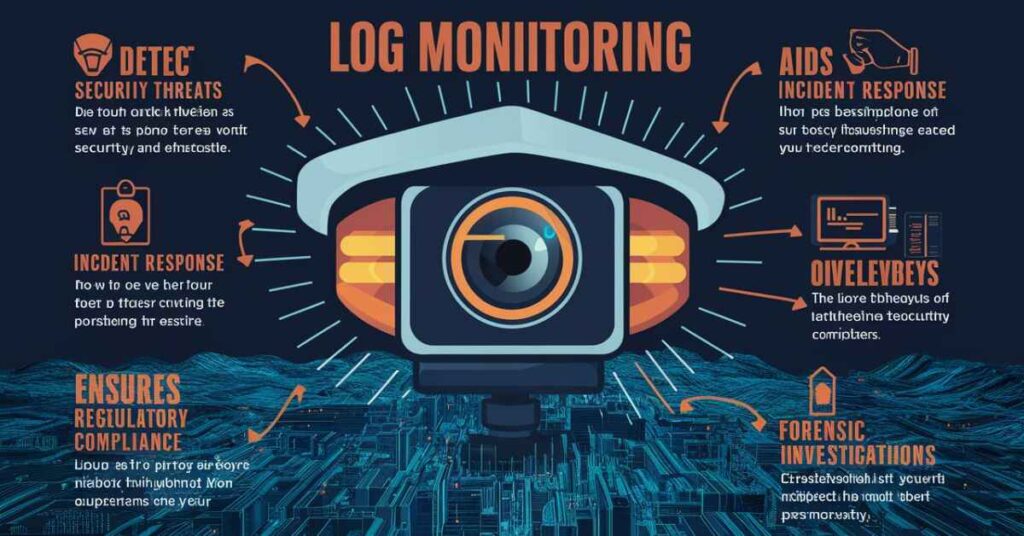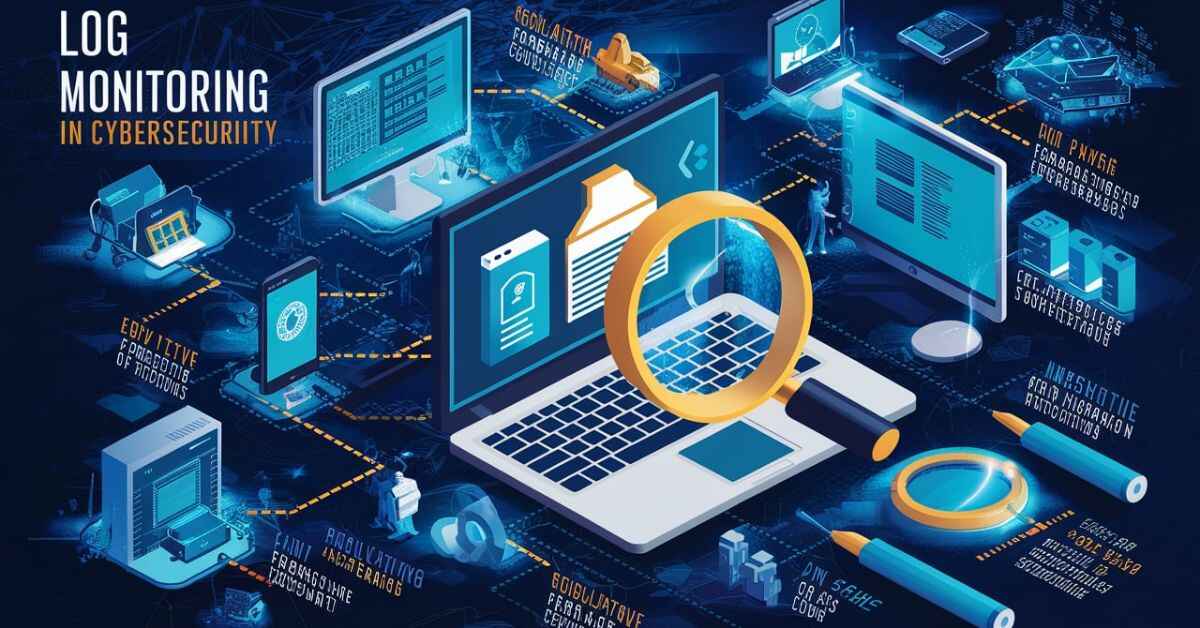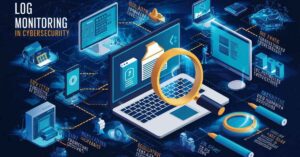In today’s hyper-connected world, the importance of cybersecurity can’t be overstated. As cyber threats evolve at breakneck speed, organizations must stay one step ahead. Enter log monitoring – the unsung hero of digital defense. But why is log monitoring crucial for cybersecurity? Let’s dive in and unravel this digital mystery.
What are Log Files?
Think of log files as your system’s diary. They’re detailed records of events, transactions, and activities occurring within your digital environment. From a user logging into a failed password attempt, log files capture it all.
Types of log files include:
- System logs
- Application logs
- Security logs
- Network logs
- Database logs
These digital breadcrumbs are scattered across your IT infrastructure, from servers and firewalls to applications and devices. They’re the silent sentinels of your digital realm, tirelessly documenting every digital heartbeat.
Importance of Log Files
Log files aren’t just digital paperweights. They’re the backbone of your cybersecurity strategy. Here’s why:
Real-time Threat Detection
Log monitoring acts like a digital smoke detector. It sniffs out unusual patterns or behaviors that might indicate a breach. For instance, multiple failed login attempts could signal a brute-force attack in progress.
Forensic Analysis and Incident Response
When the digital dust settles after an attack, log files become your CSI toolkit. They provide crucial evidence for piecing together what happened, how it happened, and how to prevent it from happening again.
“Log files are like digital fingerprints at a crime scene. They tell a story that nothing else can.” – Jane Doe, Cybersecurity Expert
Compliance and Regulatory Requirements

In the USA, various regulations like HIPAA, SOX, and PCI DSS mandate log monitoring. It’s not just good practice; it’s often the law.
Performance Monitoring and Optimization
Beyond security, logs offer insights into system health and performance. They can help identify bottlenecks, optimize resources, and improve overall system efficiency.
Careers in Cybersecurity
The rise of log monitoring has spawned exciting career opportunities. Log analysts are the digital detectives of the cybersecurity world. They sift through mountains of data, looking for the needle in the haystack that could indicate a threat.
Skills required for effective log monitoring include:
- Data analysis
- Pattern recognition
- Programming (especially Python and SQL)
- Knowledge of security information and event management (SIEM) tools
In the USA, the demand for cybersecurity professionals is skyrocketing. The Bureau of Labor Statistics projects a 31% growth in information security analyst jobs from 2019 to 2029 – much faster than the average for all occupations.
What Does a Monitoring Policy Define?
A robust monitoring policy is the cornerstone of effective log monitoring. It outlines:
- What to monitor
- How often to monitor
- Who’s responsible for monitoring
- How to respond to alerts
- Data retention periods
Best practices for policy creation include:
- Aligning with business objectives
- Complying with relevant regulations
- Regular review and updates
- Clear definition of roles and responsibilities
Remember, a policy is only as good as its implementation. Regular audits and employee training are crucial for ensuring policy adherence.
Why is Logging and Monitoring Important in a Cloud Environment?

Cloud environments present unique challenges and opportunities for log monitoring. The distributed nature of cloud infrastructure means more potential entry points for attackers. However, it also offers advanced tools for log aggregation and analysis.
Benefits of log monitoring in cloud infrastructures include:
- Centralized visibility across distributed systems
- Scalable log storage and processing
- Advanced analytics and machine learning capabilities
Cloud-specific log monitoring tools like AWS CloudWatch, Azure Monitor, and Google Cloud’s Operations Suite have revolutionized how we approach log monitoring in the cloud.
What is the Result of an Injection Attack?
Injection attacks, like SQL injection, can wreak havoc on your systems. They can lead to data theft, system compromise, or even complete system takeover. Log monitoring plays a crucial role in detecting and preventing these attacks.
Case Study: In 2017, a major US retailer thwarted a potentially devastating SQL injection attack thanks to diligent log monitoring. Their SIEM system flagged unusual database queries, allowing the security team to shut down the attack before any data was exfiltrated.
What is the Practice of Monitoring the Access Logs of a System?
Access log monitoring is like having a vigilant bouncer at your digital nightclub. It keeps track of who’s coming in, when, and what they’re doing.
Key metrics to watch for include:
- Failed login attempts
- Access to sensitive resources
- Unusual access patterns (e.g., off-hours access)
- Privilege escalation attempts
Tools like Splunk, ELK Stack, and Graylog have made access log monitoring more efficient and effective than ever before. Why is log monitoring crucial for cybersecurity?
Types of Logs in Cybersecurity
| Log Type | Description | The firewall accepts/denies |
|---|---|---|
| Network Logs | Traffic flows, connections | Firewall accepts/denies |
| System Logs | OS events, hardware changes | Boot ups, shutdowns |
| Application Logs | User activities, errors | Login attempts, transactions |
| Security Logs | Security-related events | Malware detections, policy violations |
| Database Logs | Query executions, schema changes | Table creations, data modifications |
FAQs
Q: Why is monitoring important in cybersecurity?
Monitoring is the eyes and ears of your cybersecurity strategy. It provides continuous threat detection, supports a proactive security posture, and aids in compliance and auditing.
Q: Why is log review so important for security operations?
Log review is crucial for incident investigation, trend analysis, and operational efficiency. It’s like having a time machine that lets you understand past events and predict future threats.
Q: What are the benefits of log analysis in cybersecurity?
Log analysis offers early threat detection, forensic evidence collection, system performance optimization, and enhanced compliance reporting. It’s the Swiss Army knife of cybersecurity tools.
Q: How can logs help us with security?
Logs help with real-time anomaly detection, user activity tracking, malware behavior identification, and data exfiltration prevention. They’re your first line of defense against cyber threats.
Q: Why are logs important for cybersecurity?
Logs provide comprehensive visibility into system activities, create a historical record for forensic analysis, ensure compliance with industry regulations, and support continuous improvement of security posture.
Conclusion
Log monitoring isn’t just crucial for cybersecurity – it’s indispensable. In the ever-evolving landscape of cyber threats, log monitoring serves as our digital lighthouse, guiding us through treacherous waters.
As we look to the future, advances in AI and machine learning promise to make log monitoring even more powerful. But the fundamental principle remains the same: in the world of cybersecurity, knowledge is power, and logs are the key to that knowledge.








